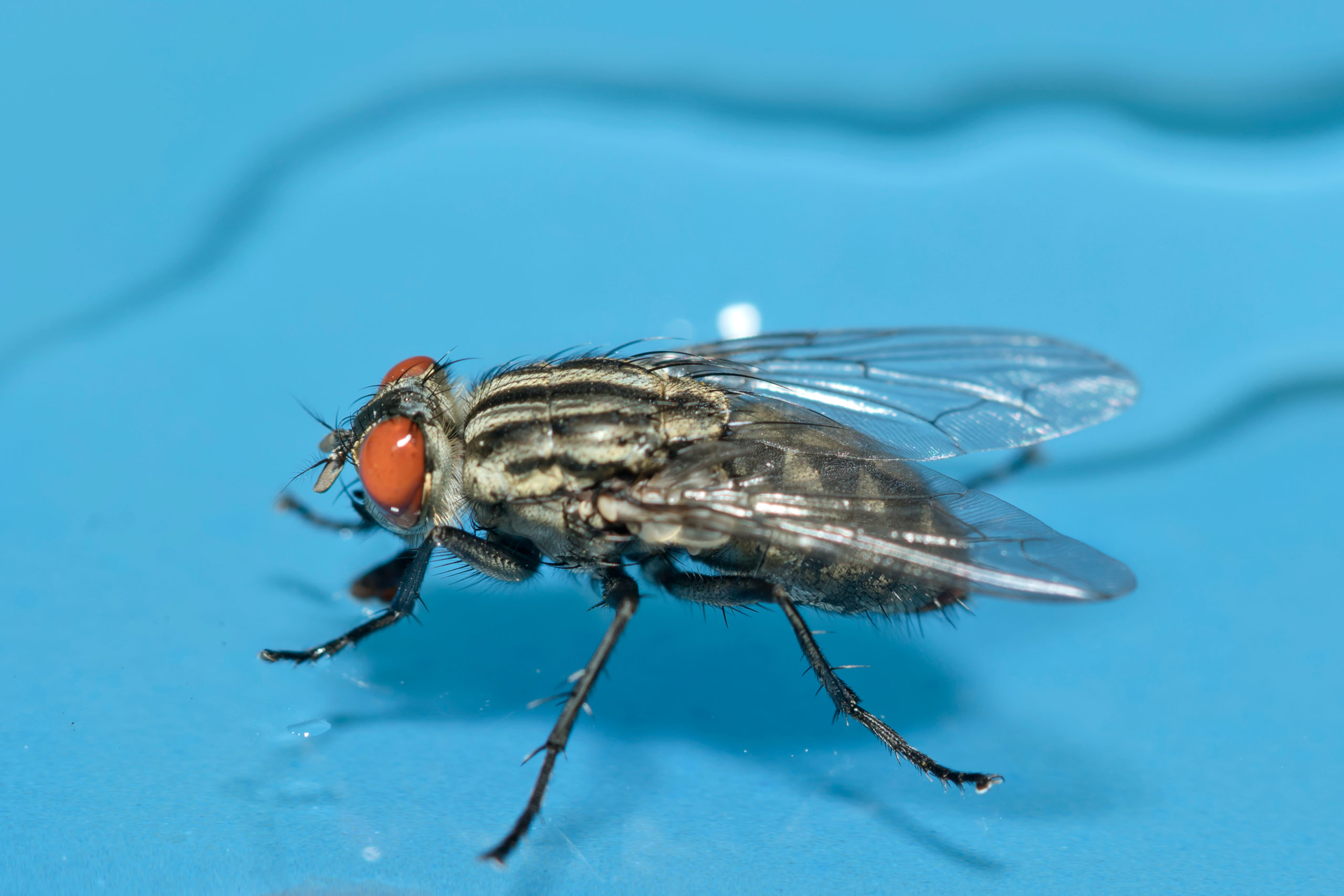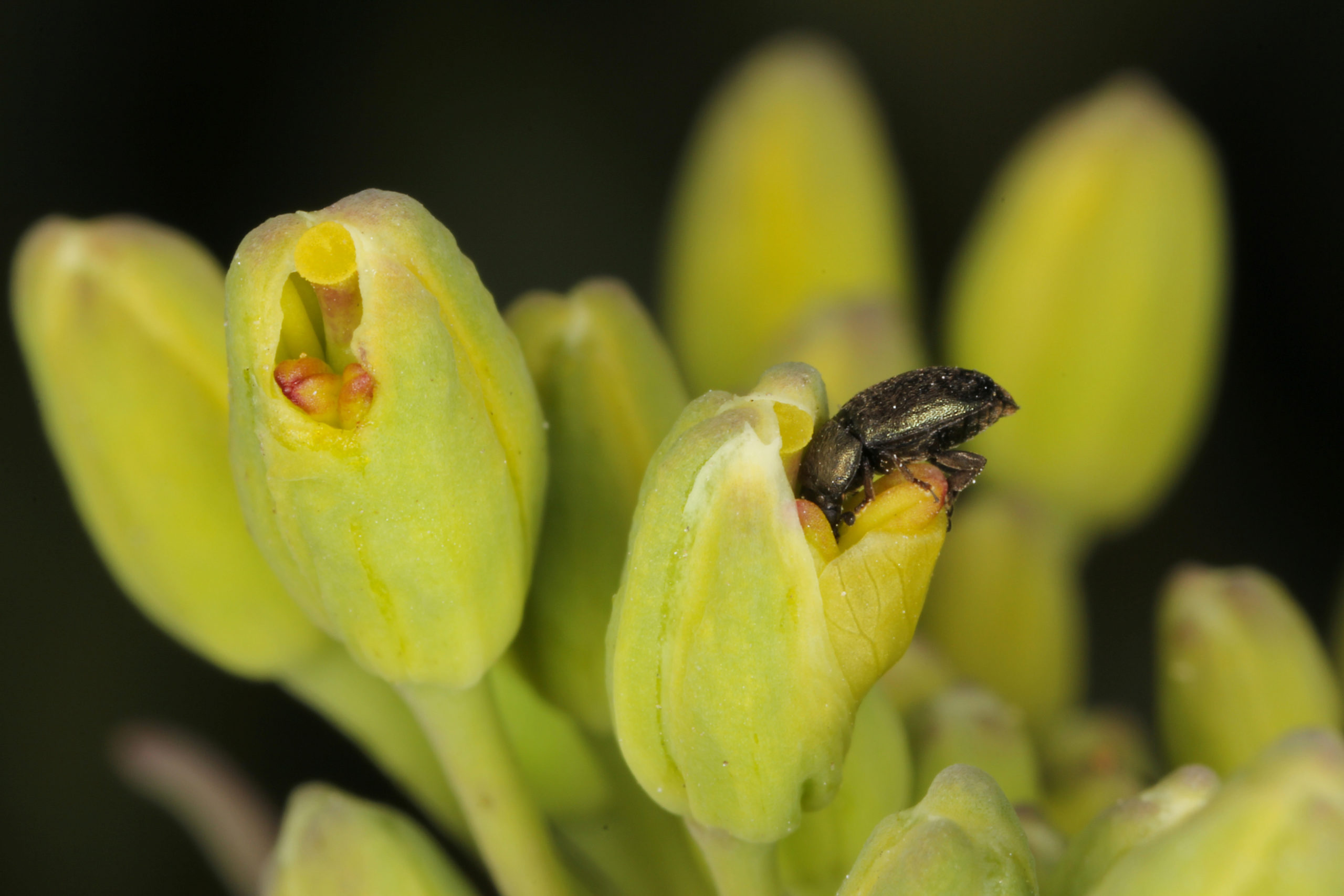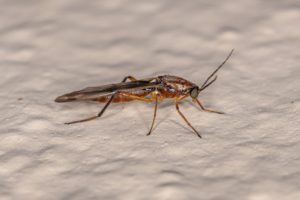Why Are Pests Attracted to Certain Colors?
Why Are Pests Attracted to Certain Colors?
Our world is filled with hundreds of thousands of colors that we enjoy every day. Most people even have a favorite color or two, especially as children, that we naturally like and gravitate towards when picking out products. But, interestingly enough, insects also have favorite colors that they flock to more often than others. Insects process colors differently than we do (for the most part), so let’s look at how these tiny terrors see the world of color and why they seem to attack us more often depending on our wardrobe choice for the day.
Can Insects Even See in Color?

First, let’s determine what exactly pests see in terms of color. We know that they can discern between colors because each kind has a specific preference depending on their diet and habitat. In general, insects perceive colors through the UV spectrum, which means that they heavily favor bright colors. The main reason for this is that their food is brightly colored or surrounded by vivid colors since it usually consists of pollen, leaves, nectar, or smaller insects. The general favorites of most insects are orange, yellow, and white for this reason. Also, the common predators of insects aren’t traditionally bright-colored. Bats, frogs, toads, birds, snakes, and spiders are usually dark-colored on most of their bodies. If they do have bright colors, the predators stay in hiding until they strike so that the insects don’t see them coming.
Green and blue aren’t the colors that insects gravitate towards since they are darker in tone and therefore aren’t quickly registered by the insects’ eyes. Blue in particular seems to keep stinging insects away for the most part, so it might be a good idea to throw on a blue shirt or blue jeans before heading out to a backyard barbecue in the summer. A rule of thumb is that the darker the color, the more likely insects will avoid it. This doesn’t mean that they will never go near a dark-colored object; it simply means that color is a huge factor for these survival-oriented creatures and they use it to avoid potential threats as much as possible.
Insects can also be motivated by smells, especially pollinators. Honey bees, bumblebees, butterflies, and wasps are driven by floral scents since they live for the sweetness of real flowers. This is why people who wear flowery perfumes seem to be the favorites of pollinators when they spend more than thirty seconds outside. The combination of floral scents with bright colors is a match made in heaven for these beneficial insects, since those are the traits of their productive food groups. But now that we know insects have a preference, let’s look at more specific insects and why they seem to have a favorite color or two, like a child picking out their outfit for school every day.
Mosquitoes

Mosquitoes are the outlier of the insect class due to their different perception of colors. A recent study from Nature Communications shows that they favor dark and bright colors. This sounds like an oxymoron, but there are actually many shades that fit in this category. Think of darker hues of orange, red, cyan, and black; the colors retain their brightness without losing the added depth of their shade. These are the areas that mosquitoes consistently favor for a few reasons. One is that they can’t register light colors as easily when they are flying around and looking for a food source. Mosquitoes are more driven by other factors than by colors when they specifically look for a warm-blooded mammal to feed upon. Anything that emits carbon dioxide is immediately appealing to mosquitoes, as well as sweat and body heat. This is why we seem to be bitten way more often when we are going for a walk or playing a sport during the warmer months. The more carbon dioxide produced when we exhale, the more likely mosquitoes are to detect and land on us. It is like a smoke signal for the bloodsuckers, since it tells them where to specifically look for a food source.
The colors that mosquitoes tend to ignore more often include purple, blue, green, and white, as well as any super light shades of the rainbow. It could be because it’s harder for them to perceive it, but it could also be because these are the colors of their common predators. Insects need to constantly operate on survival mode because they are so small and therefore susceptible to attacks from all kinds of creatures, including humans. The heat signature of mammals is red-orange due to our warm blood, so mosquitoes know to look for this shade while they search among dark and bright colors for their next host. Unfortunately, there isn’t one color we can wear that would completely deter mosquitoes from biting us. But wearing a light shirt may slightly help in preventing mosquitoes from ruining your outdoor fun.
Bees

The preferred colors of bees are probably more obvious due to their abundant love of flowers. Bees actually base their color combinations on UV, blue, and green. This is why flowers use bright hues and UV shades to attract the bees. In comparison, humans base our color combinations on red, blue, and green. Bees favor yellow, blue, and orange because that is the typical shade range and undertones of their favorite flowers. The colors that they perceive actually reflect the light rather than absorb it. Since their food and material source is traditionally so bright in color, bees tend to avoid darker shades at all costs. Many of their predators are darker, so they can feel endangered when faced with a dark color. This is why bees circle us when we wear cheery colors, as they are trying to figure out why this brightly-colored being isn’t a flower. They will typically leave us alone as soon as they realize that we don’t have any pollen to offer them, flying off in search of their actual desired materials of nectar and pollen.
Flies

Flies are more generalist with the colors that they are attracted to or repelled by. They seem to be more drawn to blue tones and hate warm tones. This is probably why a fly zooming around a house or office will land on an active computer screen; the blue light is a major draw for them and they feel the need to investigate the source. Flies like to disgustingly eat and lay eggs in garbage or deceased creatures, neither of which usually have warm tones. Something without a heartbeat and warm blood will have a cool signature, so the flies are more likely to land on it. Again, wearing warm tones won’t guarantee that you won’t have any flies land on you, especially if you have a plate of delicious food at a party. But it may help to cut down on the number of buzzing insects that have the audacity to land on you to determine whether or not you’re food or foe.
Pollen Beetles

These are the mysterious little black bugs that seem to plague our flowers every spring and not leave them alone unless we actively flick them off of the flower. They eat pollen, which by correlation means that they enjoy the bright colors that flowers proudly display. Unfortunately, their diet and abundant populations mean that they are pests for many kinds of crops and can pose a problem for gardeners and farmers. The favorite color of pollen beetles seems to be yellow due to the amount of golden flowers they are found on every spring. This could be because the yellow cues the pollen beetle to the location of pollen, since it’s the same sunny color. Some proactive farmers have gone so far as to plant a border of yellow flowers around their crops and gardens. This is done in the hopes that the beetles will stay on the yellow flowers that they love and not venture into the vulnerable plants, and it seems to be relatively effective so far. Since pollen beetles have no interest in people and therefore don’t bite us, there’s no need to panic with these pests if you happen to be wearing a sunny-hued outfit.
Horse Flies & Midges

Horse Fly

Midge
These pests, on the other hand, will bite humans if they get the chance so that they can drink our blood. They are very different sizes though, so the pain and effects of the bites will differ greatly. Horse flies are massive and you would definitely know if you are bitten, while midges are tiny flies that leave bumps reminiscent of mosquito bites. Both insects are overall attracted to darker tones of color. This is because their favorite food sources of large mammals tend to be darker in color. Horse flies and midges like horses (of course), deer, and cattle, but they will settle for any warm-blooded mammal as we know too well. Conversely, they don’t like bright colors or white, so that may be a good idea for an outfit in an area that you know has a lot of these pests. They also don’t like stripes, strangely enough, so zebras seem to be safe from their annoying bites.
Don’t Be Blue: Get Pest Control!
No matter what colors your pests are seeing, our pest control services will take care of the issues. The vibrant colors of your backyard and curated hues of your home should be enjoyed by you and your family, not an infestation of pests. Contact our team to learn more about how our EPA-approved treatments can eradicate a pest invasion and return the liveliness of colors to your home.
Citations
Are you an insect magnet? (2015, July 7). Science Oxford. Retrieved May 3, 2022, from https://scienceoxford.com/are-you-an-insect-magnet/
Why are mosquitoes attracted to black? – Mosquitonix? (2021, February 16). MosquitoNix. Retrieved May 3, 2022, from https://mosquitonix.com/blogs/news/are-mosquitos-attracted-to-black#
The best paint colors to repel bugs. (n.d.). The Painting Company. Retrieved May 3, 2022, from https://paintingco.com/the-best-paint-colors-to-repel-bugs/
What outdoor colors attract the most pests and bugs? (n.d.). Noel Painting. Retrieved May 3, 2022, from https://noelpainting.com/what-outdoor-colors-attract-the-most-pests-and-bugs/
Color: A better outdoor bird and bug repellent. (n.d.). Five Star Painting. Retrieved May 3, 2022, from https://www.fivestarpainting.com/blog/2019/may/color-a-better-outdoor-bird-and-bug-repellent/#
Olsen, J. (2022, February 7). New study suggests wearing certain colors attracts the insects. Tampa Bay WTSP. Available at https://www.wtsp.com/article/life/study-mosquitoes-attracted-to-colors/67-f20dc278-3d5d-430e-9f17-230287f0f0b8 (Accessed on May 3, 2022).
Garden Pests Do Not Hibernate Indoors – How They Attack Houseplants And What To Do
Garden Pests Do Not Hibernate Indoors – How They Attack Houseplants And What To Do Garden Pests Do Not Hibernate Indoors – How They Attack [...]
The Scariest Pests (And Why They Freak Us Out)
The Scariest Pests (And Why They Freak Us Out) The Scariest Pests (And Why They Freak Us Out) Summary: A practical, homeowner-friendly guide [...]
Favorite Foods of Rats and Mice
Favorite Foods of Rats and Mice Favorite Foods of Rats and Mice Summary: Rats and mice are surprisingly picky about what they eat—especially [...]
Where Do Spiders Like to Hide? A Locals’ Guide to Sneaky Spider Spots (and What to Do About Them)
Where Do Spiders Like to Hide? A Locals’ Guide to Sneaky Spider Spots (and What to Do About Them) Where Do Spiders Like to Hide? [...]
Why Do We See So Many Pests in the Fall?
Why Do We See So Many Pests in the Fall? Why Do We See So Many Pests in the Fall? Summary: Fall’s cooler [...]
Why German Cockroaches are Such Problem Pests (And How to Get Rid of Them)
Why German Cockroaches are Such Problem Pests (And How to Get Rid of Them) Why German Cockroaches are Such Problem Pests (And How to Get [...]

